If you plan to enjoy Utah’s off-road riding areas and trails, you’ll want to know the OHV permit requirements and ATV/UTV laws you’ll need to follow.
This page will provide you with the details on OHV stickers and ATV registration for Utah residents and out-of-state visitors.
For more information and other details regarding ATVs, UTVs, and other off-road vehicles and recreation areas, please visit: https://stateparks.utah.gov/activities/off-highway-vehicles/ohv-registration-and-permits/
Title and registration is required for all ATVs in Utah.
If you are a Utah resident, you’ll need to register and title your ATV through the Division of Motor Vehicles (DMV). To do so, you’ll need to submit the following:
Your registration decal should be placed on the rear of your ATV in a clearly visible location.
Your registration is valid for 1 year, and it will expire on the last day of the month that it was purchased.
Residents must register their OHV through the Utah DMV.
Non-residents can purchase an OHV permit from a Utah State park vendor or online here: http://utahstateparks.reserveamerica.com/showPage.do?name=common&commonPath=/htm/OHVPasses_UT.jsp
Non-residents who wish to ride an out-of-state ATV in Utah are required to purchase an OHV permit.
You’ll need to provide:
If you order your OHV permit online, it should arrive within 5 to 10 business days.
Utah ATV registration fees are as follows:

Be sure to check the rules, regulations and fees for the Utah off-road trails you plan on riding. Local laws and regulations may vary.
The minimum age to ride is 8 years old.
Riders under 18 years old are required to wear a DOT-approved helmet.
Regardless of whether a particular state or trail requires it, ATV/UTV and dirt bike riders and passengers should always wear the proper safety equipment and helmets while riding.
Never operate an off-road vehicle under the influence of drugs or alcohol.
Failing to obey the off-road vehicle laws of Utah and the local jurisdiction may result in tickets, fines, and penalties.
Check out some of these other great ATV/UTV and dirt bike resources from MotorcycleZombies.com:
ATV & UTV Insurance
Dirt Bike Insurance
ATV vs. UTV
ATV Age Ranges
What to Wear ATV Riding
How to Ride an ATV
How to Ride a Dirt Bike
How Fast is a Dirt Bike?
Have you ever thought about making your ATV street legal? This seems to be becoming more popular and does have some good advantages.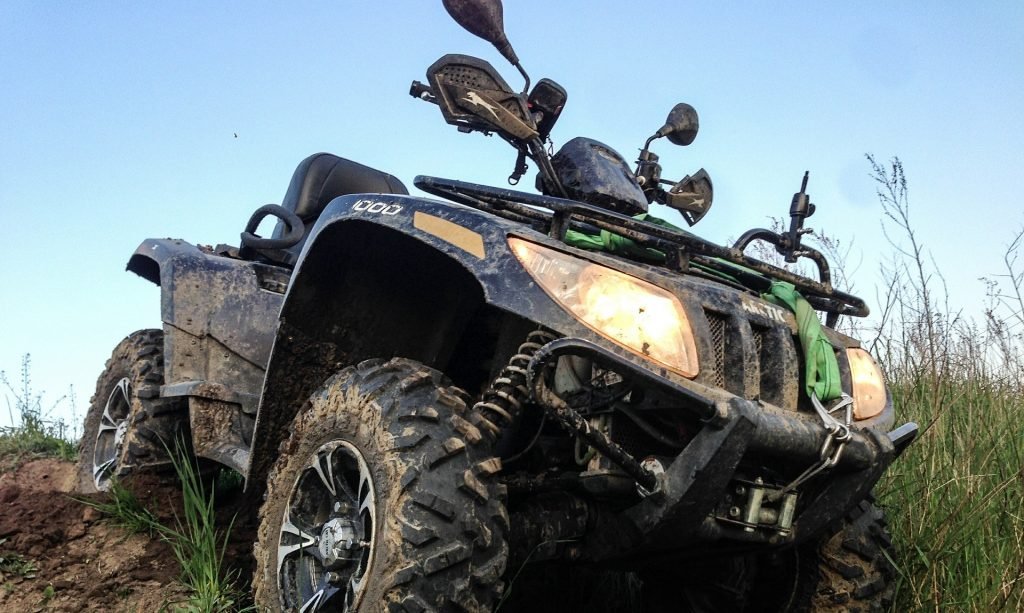 In this article “Utah ATV Street Legal Requirements” you will learn all you need to know to make your ATV street-legal. By being Street Legal you are allowed to operate your ATV on city streets, roads, and highways that are allowed in the law.
In this article “Utah ATV Street Legal Requirements” you will learn all you need to know to make your ATV street-legal. By being Street Legal you are allowed to operate your ATV on city streets, roads, and highways that are allowed in the law.
However, there are some definite advantages to having a street-legal ATV when you are out riding your ATV in the mountains. One is that if your ATV is street legal, then you can operate it on any roadway that is open to vehicle traffic, not just on designated ATV trails and roads. It certainly gives you more places to ride. (See “Operating Street Legal ATV’s” below.”)
If you are mechanically inclined you can pick up a kit from your dealer or order one online. Just make sure that if you order online that you get all the required items as outlined below. If you are not mechanically inclined then I am sure your dealer will be happy to assist you.
If you decide to make your ATV Street Legal there are a couple of things in addition to just paying your tax assessment each year you will need to do. First, you will need to have your ATV inspected every year. That is an additional cost. Second, you will have to make sure that items added to your ATV are well maintained and ready for inspection each year. This isn’t a real hard thing but something you need to remember to do.
First, you will need to have your ATV inspected every year. That is an additional cost. Second, you will have to make sure that items added to your ATV are well maintained and ready for inspection each year. This isn’t a real hard thing but something you need to remember to do.
Insurance rates are another thing you will need to consider. Your monthly premium may change because you are now insuring it as a street-legal vehicle. It could go up or it could go down. Mine went up a $1.20 per month. Not a big deal. But every case is different.
If you are interested in what this street-legal stuff is all about I have included all the information you need to know below. I have also included a link to HB0082 for 2017 that has some changes to the law this year, as well a link to the law. The big change is allowing street legal ATV use on the streets of Salt Lake County. However, there is no street-legal ATV use on highways in Salt Lake County. That would include Mountain View Corridor and Bangerter Highway. This bill is an amendment to Utah Code 41-6a-1509. As of May 14, 2019. It’s important to understand the Law. We would strongly suggest that you are familiar with this law and these amendments.
This bill is an amendment to Utah Code 41-6a-1509. As of May 14, 2019. It’s important to understand the Law. We would strongly suggest that you are familiar with this law and these amendments.
Utah Code 41-6a-1509
I hope you take the opportunity to get out a lot this season and enjoy this beautiful state that we live in and get some reprieve from the daily stress. Good luck and be safe out there.
Types of Street-legal ATV’s
An all-terrain vehicle that is a Type I or Utility Type Vehicle (UTV) may be inspected and registered as a Street-legal ATV. These types are defined as:
“All-terrain Type I Vehicle” means any motor vehicle 52 inches or less in width, having an unladen dry weight of 1,500 pounds or less, traveling on three or more low-pressure tires, having a seat designed to be straddled by the operator, and designed for or capable of travel over unimproved terrain.
“Utility Type Vehicle” means any recreational vehicle designed for and capable of travel over unimproved terrain: traveling on four or more tires, having a width of 30 to 70 inches, having an unladen dry weight of 2,200 pounds or less, having a seat height of 25 to 40 inches when measured at the forward edge of the seat bottom, and having side by side seating with a steering wheel for control. “Utility type vehicle” does not include an all-terrain type I vehicle, an all-terrain type II vehicle, a motorcycle, or a snowmobile.
Safety InspectionA safety inspection must be completed before being registered for the first time, even if it is an exempt model year. After the first year of registration, the ATV must follow the current safety inspection frequency of every other year for the first eight years based on the model year. After it is eight years old, it will be required to have a safety inspection every year. The safety inspection certificate, regardless if it is a paper or on-line certificate will have an ‘ATV’ watermark in the background. This watermark is present to assist the DMV in identifying the type of registration to process.
The safety inspection certificate, regardless if it is a paper or on-line certificate will have an ‘ATV’ watermark in the background. This watermark is present to assist the DMV in identifying the type of registration to process.
Registration
Every Street-legal ATV is required to be registered to operate under this new law. Upon registration, the ATV owner will be issued a license plate the same size as are issued to motorcycles.
Insurance
Every ATV must be insured to operate as a street-legal ATV. The same insurance requirements that a “motor vehicle” must have also applies to Street-legal ATV’s.
Driver License
The same driver license requirements that a “motor vehicle” must have also applies to Street-legal ATV’s. (Class D Operator’s License)
Requirements
Effective 5/8/2018
Superseded 1/1/2019
41-6a-1509 Street-legal all-terrain vehicle — Operation on highways — Registration and
licensing requirements — Equipment requirements.
(1)
(a) An all-terrain type I vehicle, all-terrain type II vehicle, or all-terrain type III vehicle, that meets
the requirements of this section may be operated as a street-legal ATV on a street or highway
unless:
(i) the highway is an interstate freeway as defined in Section 41-6a-102; or
(ii)
(A) the highway is in a county of the first class;
(B) the highway is near a grade-separated portion of the highway;
(C) the highway has a posted speed limit of 50 miles per hour or greater; and
(D) the highway authority with jurisdiction over the highway has designated a portion of a
highway as closed to street-legal ATVs.
(b) The restriction to street-legal ATVs described in Subsection (1)(a)(ii) is effective when
appropriate signs giving notice are erected on the highway or portion of the highway.
(c) Nothing in this section authorizes the operation of a street-legal ATV in an area that is not
open to motor vehicle use.
(2) A street-legal ATV shall comply with Subsection 41-1a-205(1), Subsection 53-8-205(1)(b), and
the same requirements as:
(a) a motorcycle for:
(i) traffic rules under Title 41, Chapter 6a, Traffic Code;
(ii) registration, titling, odometer statement, vehicle identification, license plates, and registration
fees under Title 41, Chapter 1a, Motor Vehicle Act;
(iii) fees in lieu of property taxes or in lieu of fees under Section 59-2-405.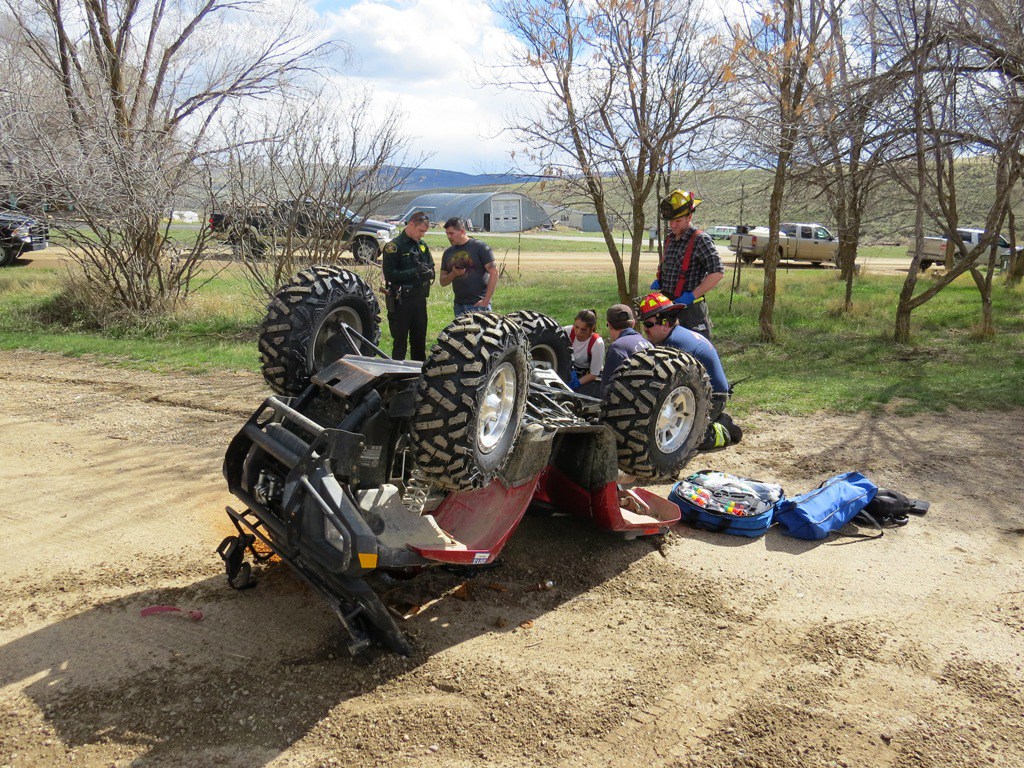 2; and
2; and
(iv) the county motor vehicle emissions inspection and maintenance programs under Section
41-6a-1642;
(b) a motor vehicle for:
(i) driver licensing under Title 53, Chapter 3, Uniform Driver License Act; and
(ii) motor vehicle insurance under Title 41, Chapter 12a, Financial Responsibility of Motor
Vehicle Owners and Operators Act; and
(c) an all-terrain type I or type II vehicle for off-highway vehicle provisions under Title 41, Chapter
22, Off-Highway Vehicles, and Title 41, Chapter 3, Motor Vehicle Business Regulation Act,
unless otherwise specified in this section.
(3)
(a) The owner of an all-terrain type I vehicle being operated as a street-legal ATV shall ensure
that the vehicle is equipped with:
(i) one or more headlamps that meet the requirements of Section 41-6a-1603;
(ii) one or more tail lamps;
(iii) a tail lamp or other lamp constructed and placed to illuminate the registration plate with a
white light;
(iv) one or more red reflectors on the rear;
(v) one or more stop lamps on the rear;
(vi) amber or red electric turn signals, one on each side of the front and rear;
(vii) a braking system, other than a parking brake, that meets the requirements of Section
41-6a-1623;
(viii) a horn or other warning device that meets the requirements of Section 41-6a-1625;
Utah Code
(ix) a muffler and emission control system that meets the requirements of Section 41-6a-1626;
(x) rearview mirrors on the right and left side of the driver in accordance with Section
41-6a-1627;
(xi) a windshield, unless the operator wears eye protection while operating the vehicle;
(xii) a speedometer, illuminated for nighttime operation;
(xiii) for vehicles designed by the manufacturer for carrying one or more passengers, a seat
designed for passengers, including a footrest and handhold for each passenger; and
(xiv) tires that:
(A) are not larger than the tires that the all-terrain vehicle manufacturer made available for the
all-terrain vehicle model; and
(B) have at least 2/32 inches or greater tire tread.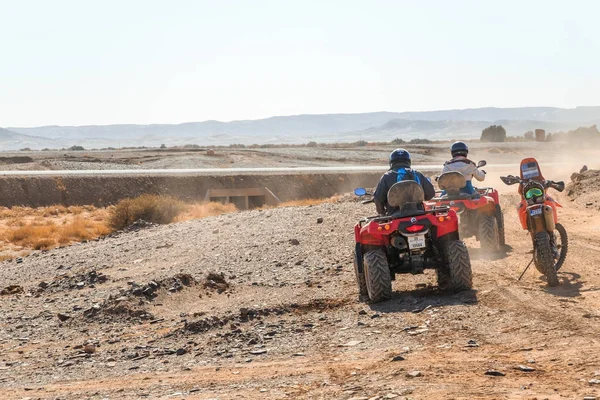
(b) The owner of an all-terrain type II vehicle or all-terrain type III vehicle being operated as a
street-legal all-terrain vehicle shall ensure that the vehicle is equipped with:
(i) two headlamps that meet the requirements of Section 41-6a-1603;
(ii) two tail lamps;
(iii) a tail lamp or other lamp constructed and placed to illuminate the registration plate with a
white light;
(iv) one or more red reflectors on the rear;
(v) two stop lamps on the rear;
(vi) amber or red electric turn signals, one on each side of the front and rear;
(vii) a braking system, other than a parking brake, that meets the requirements of Section
41-6a-1623;
(viii) a horn or other warning device that meets the requirements of Section 41-6a-1625;
(ix) a muffler and emission control system that meets the requirements of Section 41-6a-1626;
(x) rearview mirrors on the right and left side of the driver in accordance with Section
41-6a-1627;
(xi) a windshield, unless the operator wears eye protection while operating the vehicle;
(xii) a speedometer, illuminated for nighttime operation;
(xiii) for vehicles designed by the manufacturer for carrying one or more passengers, a seat
designed for passengers;
(xiv) for vehicles with side-by-side or tandem seating, seatbelts for each vehicle occupant;
(xv) a seat with a height between 20 and 40 inches when measured at the forward edge of the
seat bottom; and
(xvi) tires that:
(A) do not exceed 44 inches in height; and
(B) have at least 2/32 inches or greater tire tread.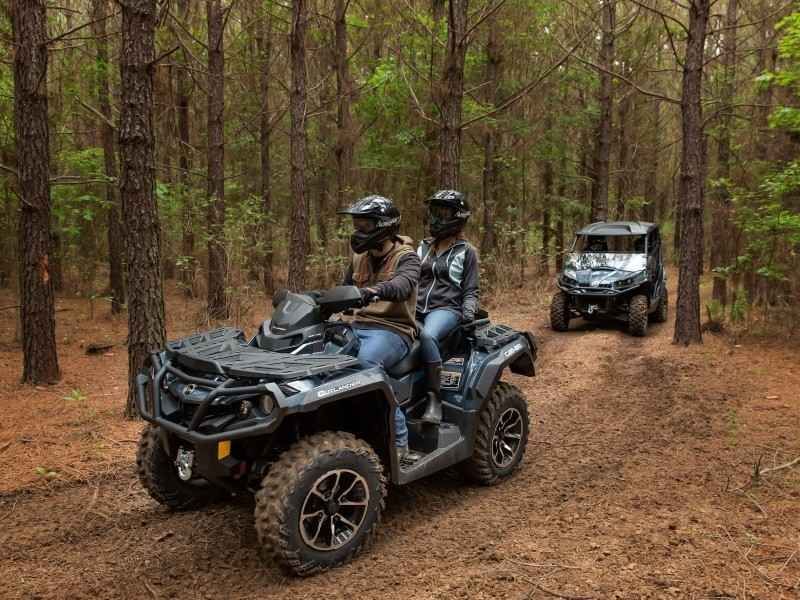
(c) The owner of a street-legal all-terrain vehicle is not required to equip the vehicle with wheel
covers, mudguards, flaps, or splash aprons.
(4)
(a) Subject to the requirements of Subsection (4)(b), an operator of a street-legal all-terrain
vehicle, when operating a street-legal all-terrain vehicle on a highway, may not exceed the
lesser of:
(i) the posted speed limit; or
(ii) 50 miles per hour.
(b) An operator of a street-legal all-terrain vehicle, when operating a street-legal all-terrain vehicle
on a highway with a posted speed limit higher than 50 miles per hour, shall:
(i) operate the street-legal all-terrain vehicle on the extreme right-hand side of the roadway; and
Utah Code
Page 3
(ii) equip the street-legal all-terrain vehicle with a reflector or reflective tape to the front and
back of both sides of the vehicle.
(5)
(a) A non-resident operator of an off-highway vehicle that is authorized to be operated on the
highways of another state has the same rights and privileges as a street-legal ATV that is
granted operating privileges on the highways of this state, subject to the restrictions under
this section and rules made by the Board of Parks and Recreation, if the other state offers
reciprocal operating privileges to Utah residents.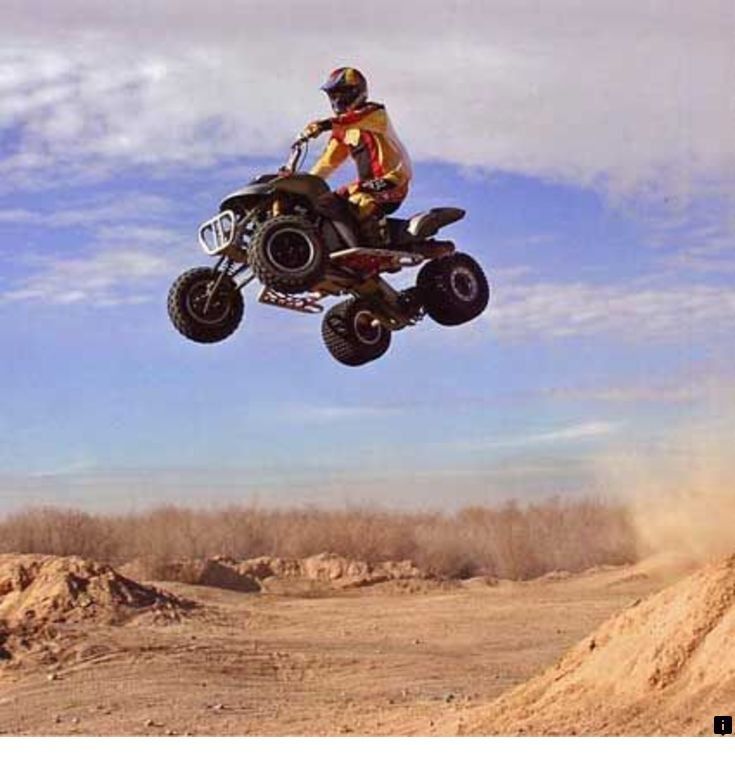
(b) In accordance with Title 63G, Chapter 3, Utah Administrative Rulemaking Act, the Board of
Parks and Recreation shall establish eligibility requirements for reciprocal operating privileges
for nonresident users granted under Subsection (5)(a).
(6) Nothing in this chapter restricts the owner of an off-highway vehicle from operating the off-highway vehicle in accordance with Section 41-22-10.5.
(7) A violation of this section is an infraction.
Amended by Chapter 166, 2018 General Sessionterrain vehicles may be inspected provided that they have been modified to be street legal. An all-terrain type I vehicle and utility type vehicle being operated as a street-legal ATV shall be equipped with the following items, which shall comply with the regulations of the department (41-6a-1509).
Operating Street-Legal ATV’s
An all-terrain type I or type II vehicle that meets the requirements of this section may be operated as a street-legal ATV on a street or highway unless;
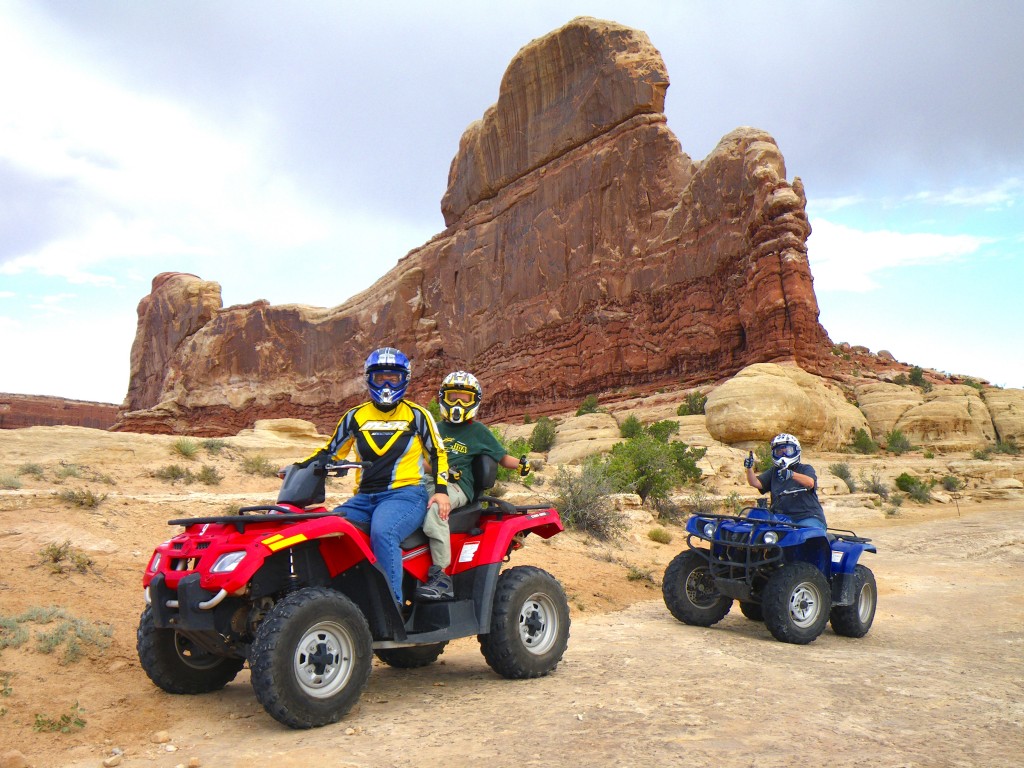 (Currently, only Salt Lake County is a county of a first-class.)
(Currently, only Salt Lake County is a county of a first-class.)A Street-legal ATV is not authorized to be used in an area that is open to motor vehicle use.
An all-terrain type I or Type II vehicle that meets the requirements of this section may be operated as a street-legal ATV on a street or highway that is a highway with one lane in each direction. An operator of a street-legal all-terrain vehicle, when operating a street-legal all-terrain vehicle on a highway in accordance with this section, may not exceed the lesser of the posted speed limit or 50 miles per hour.
An operator of a street-legal all-terrain vehicle, when operating a street-legal all-terrain vehicle on a highway with a posted speed limit higher than 50 miles per hour, shall;

Utah ATV Street Legal Requirements May 9, 2017
Greater Zion is one of the most scenic spots in the United States, in the midst of all landscapes, spend some time looking for ancient petroglyphs, narrow canyons and beautiful sunsets on every ATV ride.
See also Jeep and SUV activities.
Experience a true off-road desert adventure through sand dunes, canyons and high hills. This route map features a popular loop, but the area is open to free movement and exploration without sticking to a set path. Any approach to this iconic place is full of fun and stunning views.
This route map features a popular loop, but the area is open to free movement and exploration without sticking to a set path. Any approach to this iconic place is full of fun and stunning views.
Enjoy this 45-mile loop that starts in the quaint town of Gunlock. Designated as a natural landmark, this trail includes groves of brightly colored Joshua trees that stand out against the backdrop of wide desert plains and mountains. It contains the northernmost grove of Joshua trees in the United States. This is the perfect spring trip when the wildflowers are in bloom. All about scenic views, this gem won't affect your driving skills as the trail is easy to navigate. But it won't disappoint either.
This destination in the Dixie National Forest, covering northern Greater Zion, goes unnoticed. Stud Horse Draw features high desert and alpine environments with beautiful pine and juniper trees. Wild horses call this region home and are the real highlight of this 50-mile loop.
Know the conditions, the terrain and take the following precautions:

ATV outfitter (see list below) can provide ATVs and all accessories for guided adventures or self-guided exploration. The guides know the places where the rock formations create unique, life-like shapes and where the most breathtaking views open up.
Plan your next adventure in Southwest Utah with our interactive map. The map is easy to use and includes suggested ATV/UTV trails from red rocky deserts to alpine mountains. Trails can be filtered based on activity, difficulty and distance. When you find your next route, you can download it, share it, and print the map and directions for offline access.
Visit Our Trail Site
Download
Have you ever thought about the various records that people set using ATVs?
No? But we got interested and dug up quite interesting facts.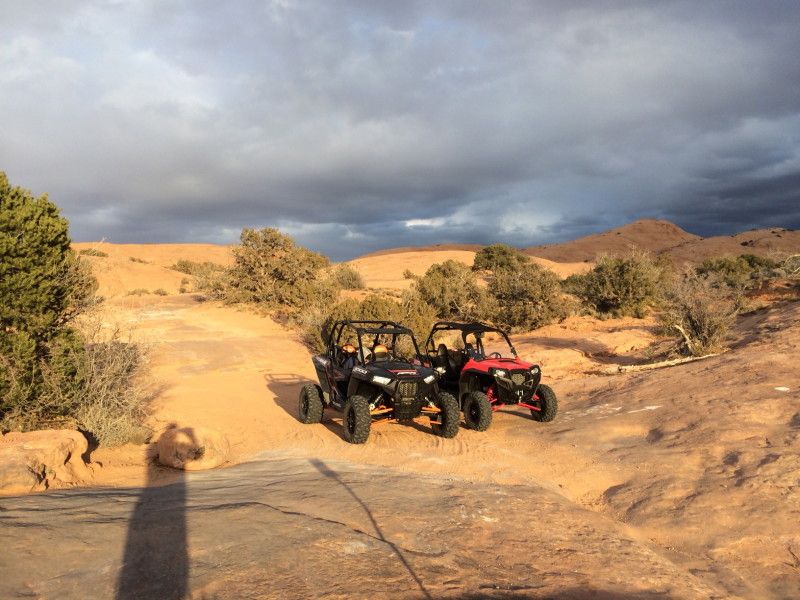 Moreover, you don’t have to go far - just open the Guinness Book of Records.
Moreover, you don’t have to go far - just open the Guinness Book of Records.
So, let's talk about each of the records in more detail.
Fastest ATV speed
TERRY WILMETH achieved fantastic speed on June 15, 2008. The driver was able to accelerate his ATV to 315.74 km / h.
The record was set at Madras Airport, Oregon, USA.
This is a Yamaha 700 Raptor – Rocket Raptor 6.0. Of course, a modified ATV was used as a vehicle. To achieve the appropriate speed, a small rocket engine (solid propellant booster) was added.
Largest ATV Parade
Largest ATV Parade was organized in Richfield, Utah (USA) by Rocky Mountain on September 16, 2009. It is noteworthy that 1947 ATVs started, and "only" 1870 finished. On that day, September 16, 2009, the record owned by the state of Kentucky, which at that time was 1200 ATVs, was just broken. An attempt to break Utah's record was made next in 2012, but the record was never broken.
ATV jumping records.
The highest jump recorded to date on an ATV ATV belongs to American Jon Guetter. The ski jump was made on March 29, 2008 on a Can Am 450 ATV and amounted to 53.92 meters (176 feet 11 inches). The action took place in the city of Melbourne (Victoria, Australia)
The longest jump on an ATV Side-by-Side.
{source}[[iframe width="900″ height="506" src="//www.youtube.com/embed/IxiRZBr2V5s" frameborder="0" allowfullscreen]][[/iframe]]{/source}
Ryan Piplic driving the RZR The XP 1000 set a new side-by-side world record by jumping almost 50 meters. On November 2, 2013, at the annual Fuel Fest in Utah, Ryan hit 75 mph (120 km/h) and jumped 47.5 meters, beating RJ Anderssen's previous record of 39.5 meters.
As seen in the video, Ryan almost completely overshot the receiver, causing him to land very hard. The broken suspension of the front left wheel also speaks of a not very successful landing.
The longest jump on an ATV together was also recorded in Utah, in the city of Salt Lake City (Salt Lake City, Utah, USA) on November 17, 2008.